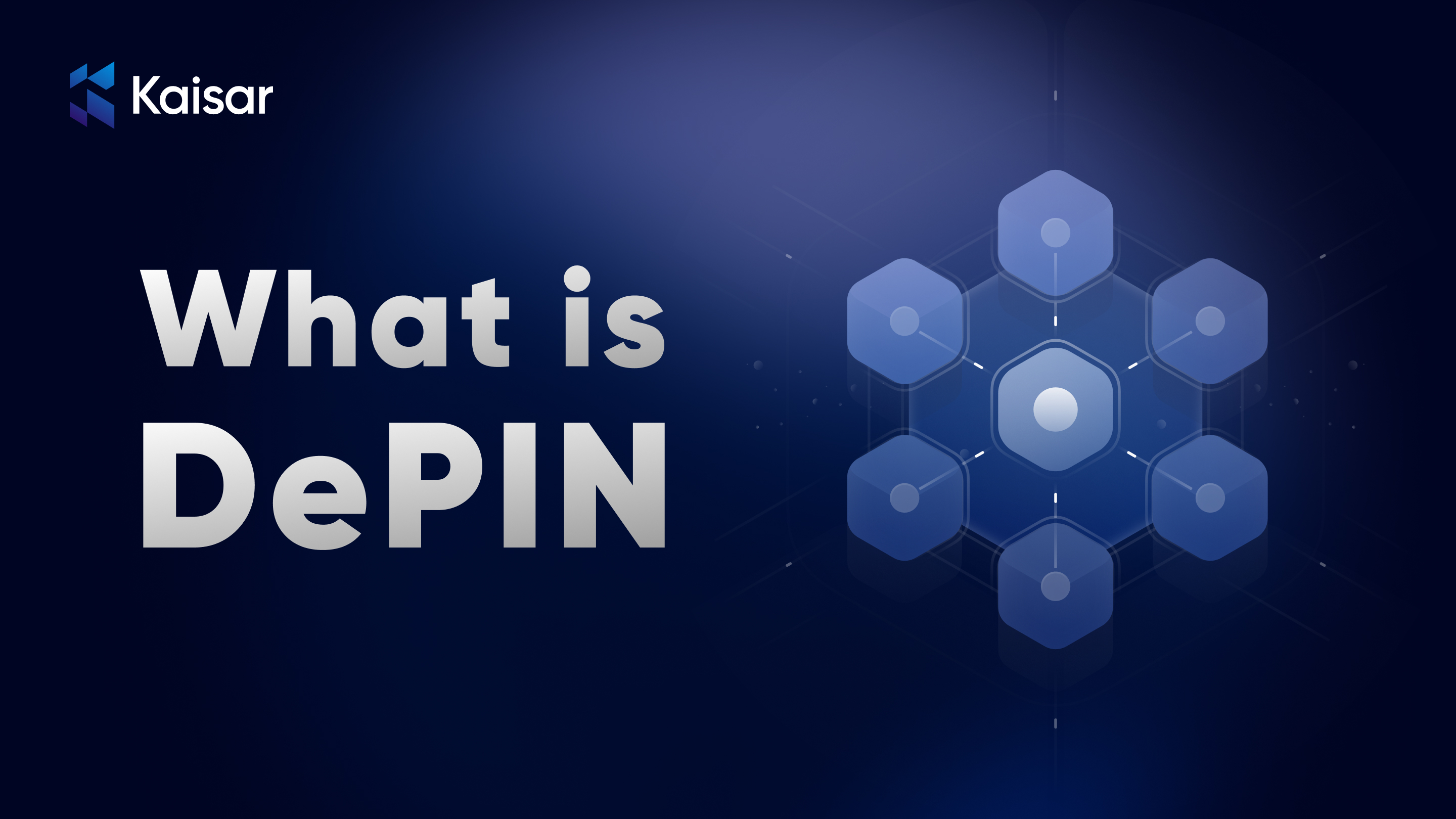In last few years the rise of decentralized technologies has brought a transformational shift in the Information technology space . From supply chains to computing, decentralization has proven its worth in various ways.
Decentralized Physical Infrastructure Networks(DePIN) which is a popular concept derived from decentralized technologies has standout as a popular alternative to cloud computing for firms and developers looking forward to enhance efficiency and cut costs.
DePIN appears to be a future game changer and in this article we will discuss about its features ,use cases and what makes it different from traditional cloud computing.
What is DePIN?
Decentralized Physical infrastructure Networks(DePIN) are blockchain based networks which leverages computing power from the underutilized physical infrastructure and collectively host it as infrastructure network.
The allocation of computing power can be through undifferentiated resources such as idle GPUs, underutilized storage servers, and further physical infrastructures located across the globe.
Thanks to DePIN decentralized nature the resources are not controlled by a single entity or organization but distributed across a network which are funded and controlled via smart contracts on different types of blockchain platforms.
DePIN abolished the concept of central control so that computing power and infrastructure can be democratically offered and no single entity can assume full rights over those networks.
Learn more about DePIN at Telegraph
DePIN Features
Distributed System Design
In a DePIN network structure the nodes are distributed across the world having various particpants contributing to nodes health and availability. This not only makes it difficult to have isolated points of failure but also reduces the chances of downtime and data loss.
Tokenization
DePIN leverages blockchain and tokenizes the contributions made from the resource provider while promoting transparent and effective payment strategies between provider and client requesting resources.
Affordable at Scale
Decentralized Physical infrastructure Networks(DePIN) are easily scalable. Organization can add more nodes or participants on fly without investing in massive infrastructure to meet and fulfill their mission critical requirements.
Cost Effective
DePIN aggregates and distributes computing resources from underutilized infrastructure which not only reduces the costs to buy and maintain new infrastructure but also makes it easier for users who want to pay less for resources located nearby.
DePIN Use Cases
AI Model Training
Typically Artificial Intelligence(AI) models requires enormous amounts of computing power. Decentralized Physical infrastructure Networks(DePIN) makes it easier for users to rent unused GPU resources for running large AI training procedures without depending on pricey centralized GPU providers.
At Kaisar, We also offer decentralized GPU compute solutions tailored to specific AI demands.Book a consultation here.
Storage Networks
DePIN can alos be utilised for creating large decentralized long-term data storage solutions while offering class-leading redundancy and reduced dependence on single point of failure storage solutions.
IoT Networks
DePIN can provide underutilized infrastructure to enhance the resource-efficiency of IoT networks by deploying a distributed network of devices that can work in tandem on data processing and decision- making.
Content Delivery
Using DePIN, content distributors can leverage accelerated delivery times and decreased server load while distributing their contents in a nodes network dispersed all around the world.
Comparison with Traditional Cloud Computing
There are several factors to consider when comparing traditional cloud computing and DePIN. Some of these are as follows:
Centralization vs. Decentralization
In traditional cloud computing, the centralised servers are managed under the domains of major corporations such as AWS, Google, and Microsoft. Although this makes the management of resources efficient but such structure can make the user dependent on them.
In case of DePIN, the infrastructure management lies between various independent participants overcoming the odds of any centralised dependence.
Learn more about Decentralization at Gartner
Cost Models
The cost models for traditional cloud computing typically utilizes pay-as-you-go approach which means resources required are paid as they used. For small businesses this approach can become excessively expensive as they are required to pay based on current demand and availability of required compute resource.
But when utilizing the distributed DePIN architecture, the cost of utilization can go down as DePIN network aggregates and utilize the spare resources available across the world of the participants, which enables a much lower price, especially for computationally intensive AI workloads and blockchain-based applications.
Security & Privacy
Traditional cloud solutions has access to wide variety of advanced security protocols and certifications. Still, their centralized system design can lead to enormous data exposure due to centralised point of failure.
On the other hand the architecture of DePIN, adds an element of security by limiting the number of points of failure and leveraging blockchain which brings benefits for participants in terms of transparent and tamper-proof transactions.
Learn more about DePIN security at Coindesk.
Scalability and Innovation
DePIN allow participants to easily add additional nodes whcih makes scalability a bit flexible and cheaper.In a centralized model the cloud providers handle scalability mechanisms.
With DePIN contributors can innovate faster since it is a community-driven development and offers greater control over usage and configuration of infrastructure when compared to traditional cloud computing.
Conclusion
To conclude despite the fact that traditional cloud computing is more established and provide reliable solutions for most use cases, DePIN offers a future-edge alternative for those taking into account decentralization, cost-effectiveness, as well as more control over resources.
Transform with Kaisar DePIN Network
Kaisar Network lies at the forefront of the DePIN providing scalable, decentralized GPU computing solutions tailored for AI. With Kaisar, you can access a global network of GPU resources, enabling faster, more affordable, and decentralized GPU computing.
Explore how Kaisar Network can transform your infrastructure today!

